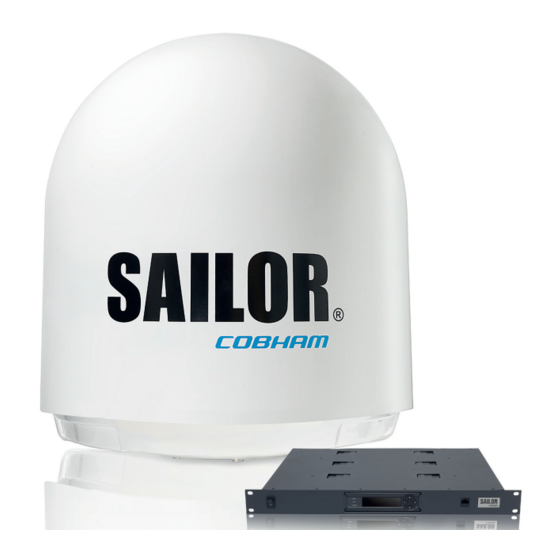
COBHAM Sailor 900 VSAT Manuals
Manuals and User Guides for COBHAM Sailor 900 VSAT. We have 3 COBHAM Sailor 900 VSAT manuals available for free PDF download: Technical Manual, Installation Manual
COBHAM Sailor 900 VSAT Technical Manual (356 pages)
advanced maritime stabilised Ku-band antenna system
Table of Contents
-
-
-
Tools Needed42
-
-
Interference52
-
-
-
Interfaces69
-
-
-
Power Source
79 -
Power up
83 -
-
-
-
E-Mail Setup115
-
Upload124
-
Administration124
-
-
The Menu Tree131
-
SNMP Support
136
-
-
Software Update
147-
Overview151
-
-
Troubleshooting
245-
LNB Test252
Advertisement
COBHAM Sailor 900 VSAT Installation Manual (248 pages)
Table of Contents
-
Typography
26 -
Precautions
26 -
-
Installation
35 -
Unpacking
35 -
-
Interference47
-
-
-
Power Source
69 -
Power up
71 -
Calibration
75 -
-
-
E-Mail Setup103
-
Upload112
-
Administration112
-
-
The Menu Tree119
-
SNMP Support
124 -
Software Update
133 -
Troubleshooting
143 -
-
Outline Drawings
151 -
-
Troubleshooting172
-
COBHAM Sailor 900 VSAT Installation Manual (192 pages)
Table of Contents
-
-
Typography
15 -
Precautions
15
-
-
-
Calibration
62
-
SNMP Support
101 -
To Get Support
106 -
Software Update
113 -
-
Outline Drawings
128 -
Introduction
131 -
-
Safety142
-
ESD Protection142
-
Advertisement
Advertisement


